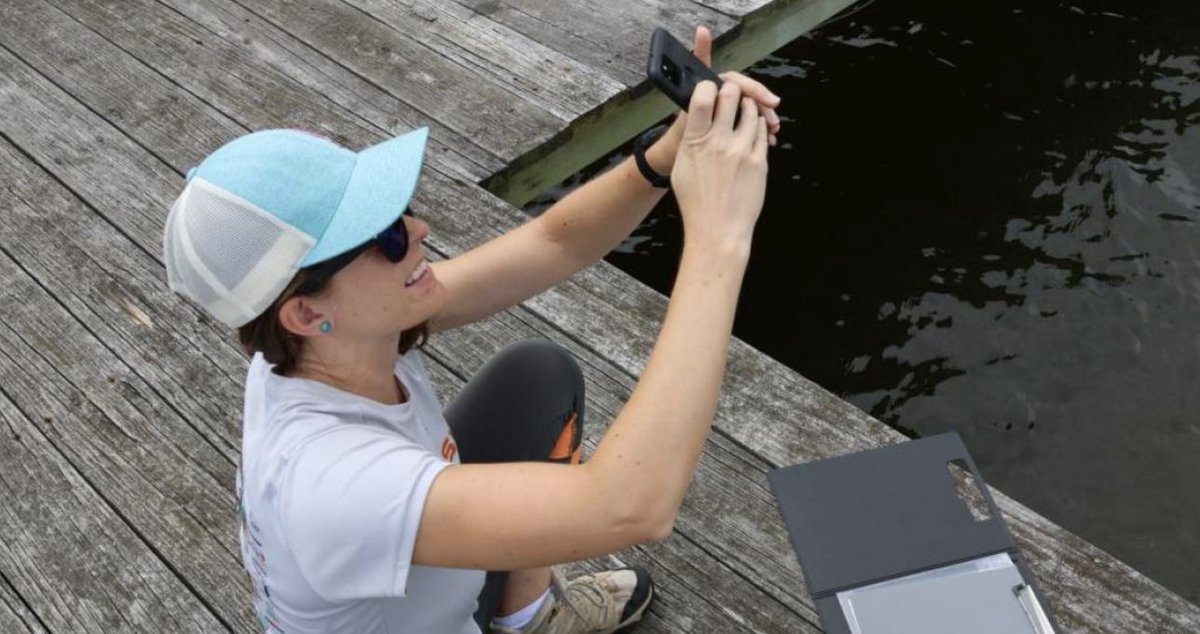
NASA Citizen Science
@DoNASAScience
This account is inactive. Follow @NASAScience_ to stay in touch & discover ways you can #DoNASAScience! Verification: http://nasa.gov/socialmedia
It has been a pleasure connecting with you here, but this account is now inactive. But don't worry! We’ll still be sharing awesome NASA #CitizenScience news and opportunities on our new official account: @NASAScience_. You can also keep in touch and stay in-the-know about all…
Just one week left until this account is sunset! We encourage you to keep in touch and stay in-the-know with all things NASA #CitizenScience by signing up for our newsletter at science.nasa.gov/citizenscience. #DoNASAScience will continue making appearances on all our other…

Exciting changes ahead! We’ll be sunsetting this account over the coming weeks as we do some consolidating, but NASA #CitizenScience isn’t going anywhere! For continued access to our latest news, important announcements, and resources, please find the sign up link for our…
We often ask the age-old question … what came first, the chicken or the egg? Regarding the cosmos, astronomers often wonder which objects formed first: galaxies or their central supermassive black hole.
Telescopes in Arizona and Hawaii are scanning the sky in search of small, rocky objects left over from the formation of our solar system – asteroids! As part of the International Astronomical Search Collaboration, you’ll search fresh, time-lapse images from these telescopes to…

These high school and college students collected/analyzed space weather data using a DIY radio telescope and presented at major conferences! Their work complements the SunRISE mission, which seeks to decode solar radio bursts – the intense solar emissions that disrupt technology…

Making weekend plans? Put some science on your to-do list with the Galaxy Zoo project!🌌 Be among the first to glimpse galaxies from the early universe & help scientists classify galaxy shapes in @NASAWebb images. Learn how you can @DoNASAScience: science.nasa.gov/directorates/s…
Ever find yourself gazing up at the blue sky and the clouds passing by – sometimes thin and wispy, other times thick and puffy, maybe in the shape of a duck, or a dragon, or a rocket ship?! Ever imagine lying down in your astronaut suit on the surface of Mars to do the same?…
Mark your calendars to come see the amazing impact a decade of your observations can have.
Join us in 1 week for the next GLOBE Observer Connect event, on 22 May 2025 at 12 PM ET (16:00 UTC). The conversation, led by Holli Kohl, GLOBE Observer coordinator and Kristen Weaver, GLOBE Observer deputy coordinator, will focus on the amazing impacts of the GLOBE Observer over…
Do THESE look familiar? 👇 If so, you could help @DoNASAScience! Noctilucent, or night-shining, clouds are the world’s highest clouds, forming between about 47 to 53 miles up in Earth’s mesosphere. Their high altitude (and their ice-crystal composition) allows them to reflect…
Ever been sky-gazing just before dawn/after sunset and noticed a cloud that seems to shine with its own light? Launching today: NASA's Space Cloud Watch #CitizenScience project invites you to help reveal key insights about these rare night-shining clouds: go.nasa.gov/43wXVT6

Attention 6th-12th grade teachers: You can #DoNASAScience with your students! As part of Growing Beyond Earth, your students will grow plants just like astronauts, and the data they collect will help future space travelers! Info session: May 21st, 5pm ET. bit.ly/44U3hsH

Need some outside time?☀️ With Chesapeake Water Watch, you can use your smartphone to collect water quality data on the #ChesapeakeBay. Your observations will complement NASA satellite data and help researchers monitoring the Bay's health. bit.ly/41t5Kq9

In the aurora chasing community, we celebrate how this beautiful phenomenon brings us together. Participants in this year's Winter Field School felt the same! Read their moving epiphanies in our latest blog post: blog.aurorasaurus.org/?p=2178
Tune in today at 2pm ET! ☀️🦗
How do wildlife respond to eclipses? @DoNASAScience and the Eclipse Soundscapes project now have some answers! They’ll be sharing their findings in a free webinar tomorrow, May 7, at 2pm ET. Register here: go.nasa.gov/42KDF07 During the April 8, 2024, total solar…
Some of NASA's groundbreaking research can only be done with the help of volunteers – like YOU! A cell phone or computer, and your curiosity, are all you need to become a NASA citizen scientist. Check out these volunteer success stories and learn more: go.nasa.gov/44NMHux ✨

This NYC math teacher helped her students measure tree heights with the @GLOBEProgram GLOBE Observer app and became a published scientist along the way. 🌳📏 Read more about how she’s making a difference and inspiring the next generation of scientists: go.nasa.gov/4jBVggi

From space weather to solar eclipses, ham radio operators are advancing science! 🎙️ The HamSCI community gathered in March for “HamSCI’s Big Year”, sharing research from around the world. Learn more & explore the talks + posters: go.nasa.gov/4d1rqz

That’s a wrap on Citizen Science Month—and we crushed our goal of #OneMillionActsOfScience! Because of you, discoveries were made, mysteries explored, and lives protected. This is what science looks like when everyone gets to participate. 💫 Keep going: science.nasa.gov/citizen-science

Wanna @DoNASAScience? Join our live #Twitch stream today at 4pm ET and learn how to spot galaxies in new images from @NASAWebb 👇
Join @NASA on #Twitch on April 29th at 4pm ET for a #CitizenScienceMonth live demo of our new project, Galaxy Zoo! We’ll go galaxy hunting using @NASAWebb data and answer your questions live on-air. 🔗 bit.ly/4jxtNwz